Record First Quarter Severe Weather Explained
You are correct if you think there has been a high occurrence of severe weather (hail, thunderstorm wind gusts, and tornadoes) across the U.S. since the start of the year. In fact, to close out the first quarter on March 31st, NOAA Storm Prediction Center has confirmed 138 tornadoes which would rank as the 3rd most recorded in a 24-hour period since 1950.
Below is a look at the BMS iVision accumulated severe weather frequency for wind gusts of 60 mph or greater, hail 1”+, and the occurrence of tornadoes for the first quarter of 2023. The areas that have seen an unusual amount of severe weather this year include areas around Dallas and Fort Worth into the southeast and up into the Middle Mississippi River Valley.
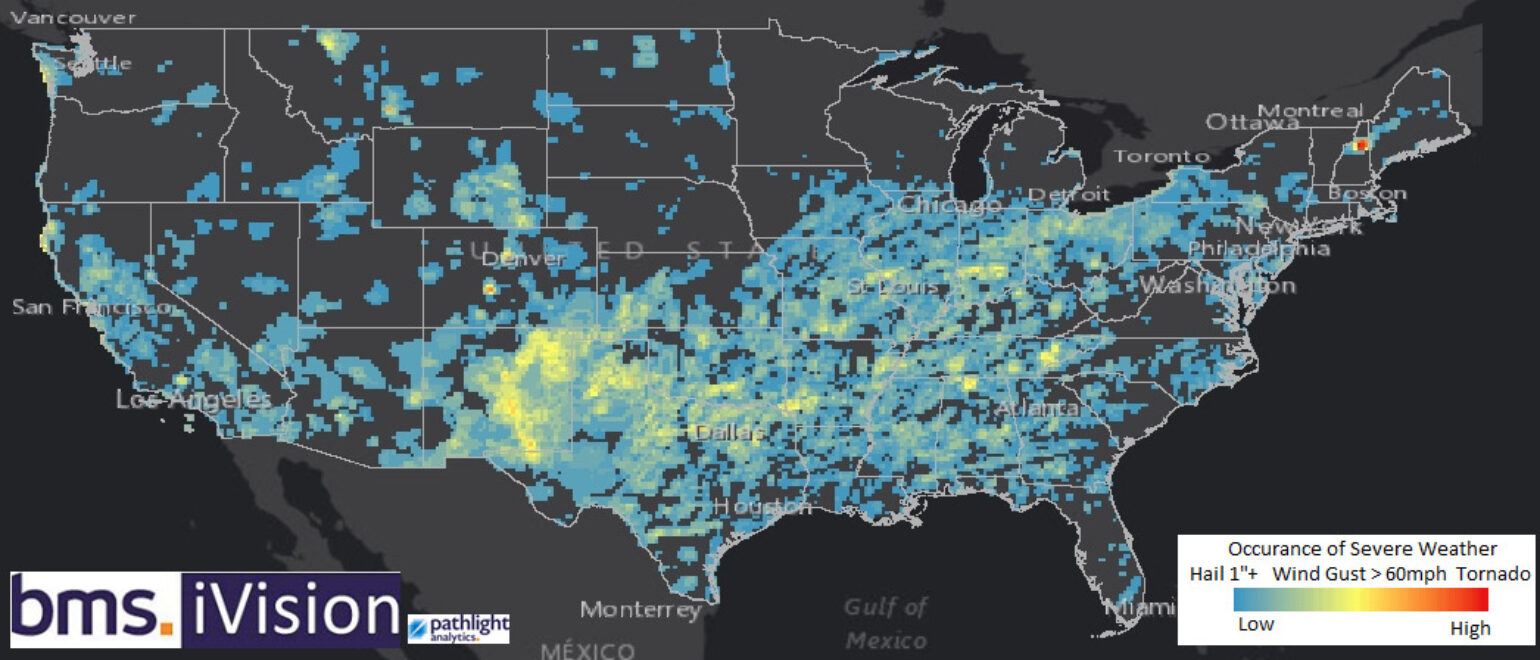
There is no doubt that the first quarter of the U.S. insurance industry will be a costly one. According to industry claims data and estimates by BMS Re, the first quarter severe weather insured losses should come in at a range of $7B to $9.5B of insured severe thunderstorm storm losses from hail, tornado, and thunderstorm wind gusts. Losses are still developing, but the initial estimates provide a large aggregate loss that has occurred over 12 severe weather events since January 1st. The main loss driver is expected to be three $1 billion-plus events in March, including the Rolling Fork, MS, and Little Rock, AR, tornado weather systems that impacted a much larger area than these specific tornado tracks.
With the understanding that the insurance industry is already in a heightened inflation era, even CPI loss adjustments must be taken with a grain of salt. Still, on a CPI-adjusted basis, the January – March first quarter U.S Severe weather losses appear to be at or close to a modern-day record.
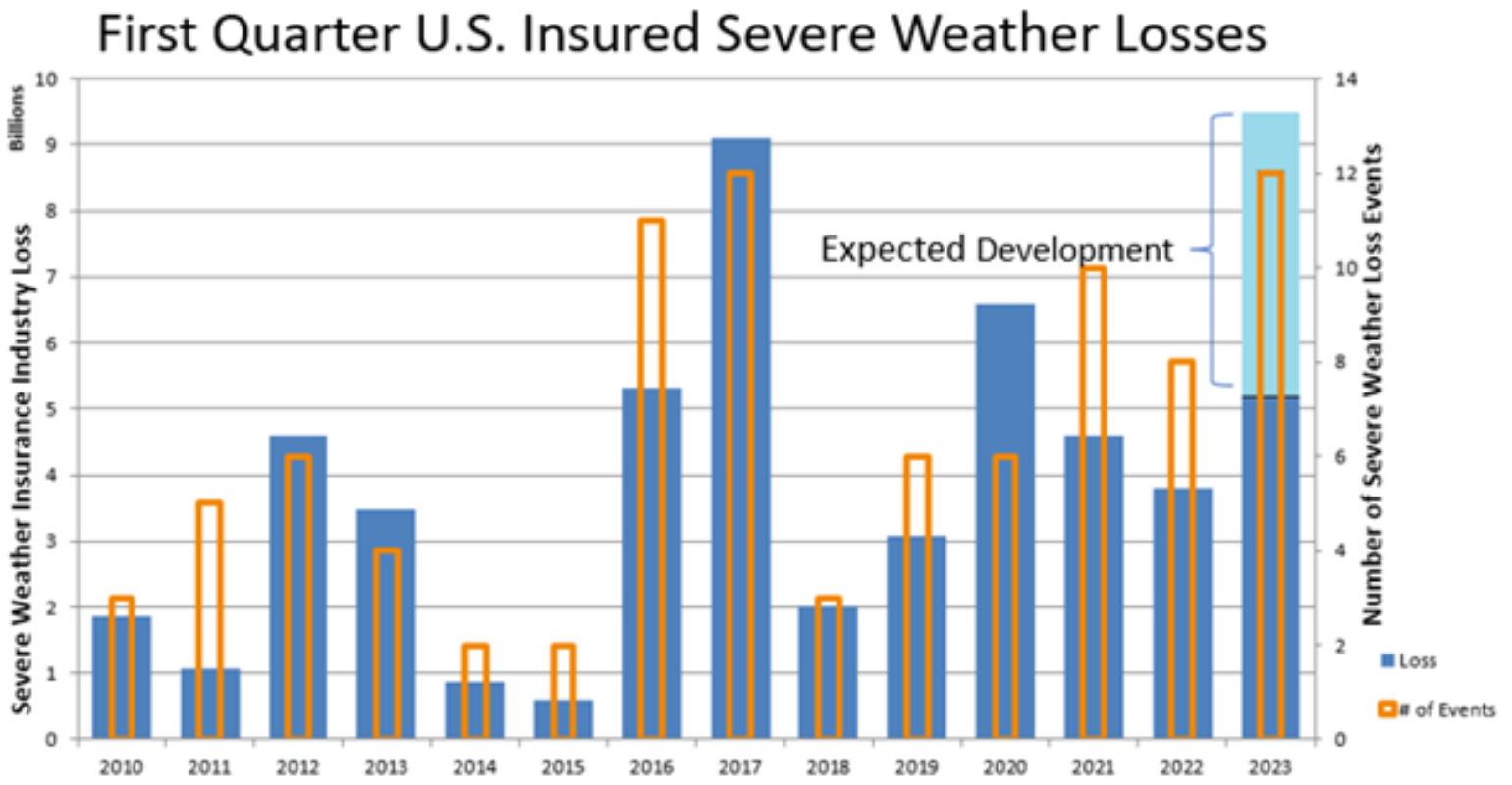
What are the Climate Forcers of Severe Weather Causing Such High Losses This Year
So, what is causing the high occurrence of severe weather this year? The most recent benchmark years for severe weather in terms of severe weather reports have been 2008 and 2011. However, what makes this year stand out is the noticeable steady or even downward trend in the occurrence of severe weather in recent years for perils like hail.
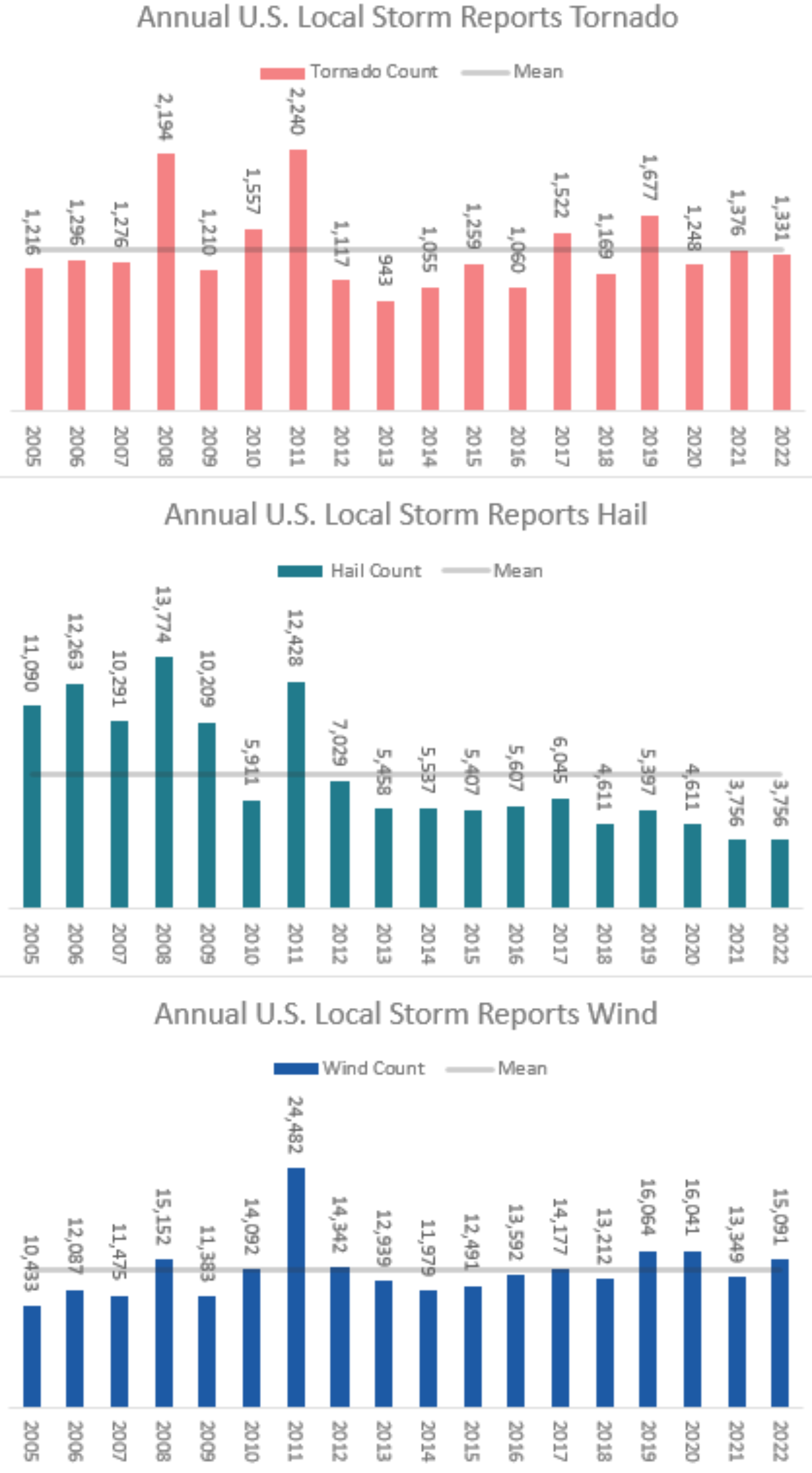
Below, BMS Re Pathlight Analytics aims to explain some of the climate forcers to this year’s occurrence of severe weather.
Main Ingredient Needed for Severe Weather
First, we need to understand the main feature atmospherically that drives severe weather to occur in the central plains and into the eastern half of the U.S. This feature is an upper-level trough of low pressure that combines with an active jet stream across the Western U.S. State that ejects and allows for the formation of surface low pressure into the central plain states.
The chart that best explains the last four months across the U.S. weatherwise might be this 500mb height anomaly, which shows that the overall pattern of a trough of low pressure (Purple & Blue Colors) has been prevalent in the western U.S. As a result, many likely experience the best ski season in a lift time and a ridge of high pressure (Yellow to Red) along the East Coast, which has provided all the snowbirds in the southeast with great mid-winter heat. This pattern has modulated extremes on both sides of the nation.
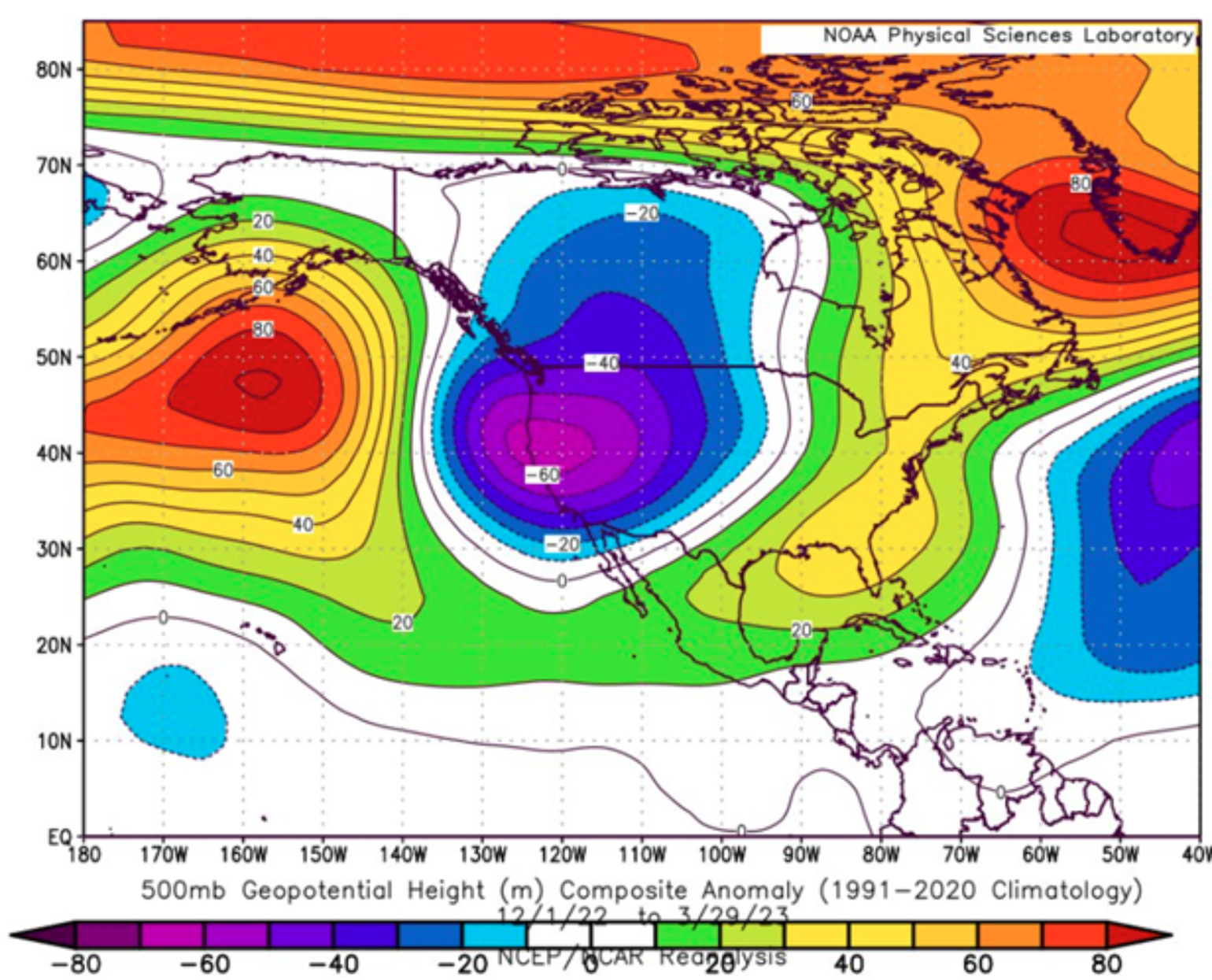
This overall pattern of a trough along the west coast and ridge along the east coast could also be enhanced by the sea surface conditions that are occurring in the Pacific Ocean. We know, overall, that the Central Pacific Ocean is coming out of a rare multi-year La Niña which, in general, tends to provide an active jet stream across the U.S. during the winter months and tends to lead to higher occurrences of severe weather across the U.S. Now, the overall pattern that has been occurring is not entirely driven by the weakening La Niña in the Central Pacific. Some aspects are not La Niña-ish at all, like the record-setting California snowpack that has occurred over the last few months. The negative Pacific Interdecadal Oscillation (PDO) occurring in the Northwest Pacific could enhance the overall pattern. The PDO in the negative phase also favors longwave, low-pressure troughs over the western U.S., which seems to produce more tornadoes in southern states, like Alabama, into Tennessee, Illinois, and Indiana. If you line up the PDO, it is also negative similar to 2011, which saw much active severe weather during the spring months.
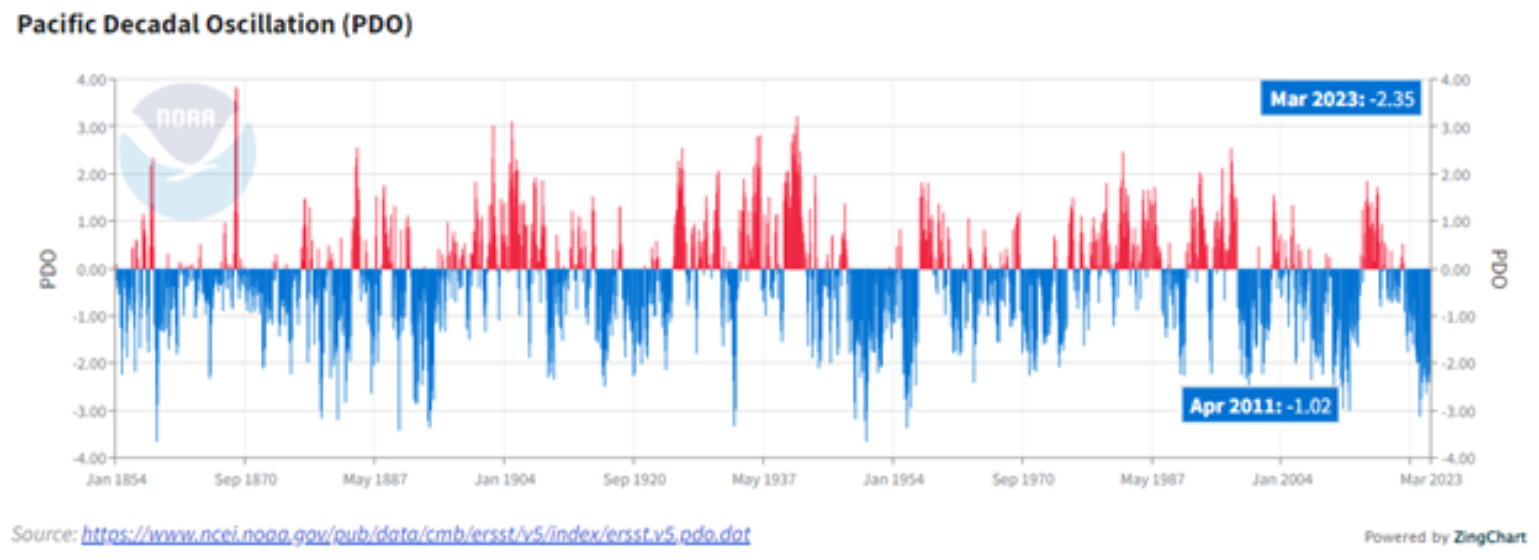
Secondary Ingredient Needed for Severe Weather
On top of the driving factor of the climate forcers explained above, the other ingredient that can enhance severe weather formation this spring is:
- A strong dry line that local drought conditions can enhance the formation of thunderstorms as dry air undercuts the humid air causing air to rise and the formation of thunderstorm development. This dry region in the south-central plains could enhance the dryline during this severe weather season.
- It should be noted that going into spring months, the larger scale weather pattern can provide high winds, very dry air, and drought-parched vegetation, leading to the dangerous threat of rapid wildfire spread in the southern High Plains.
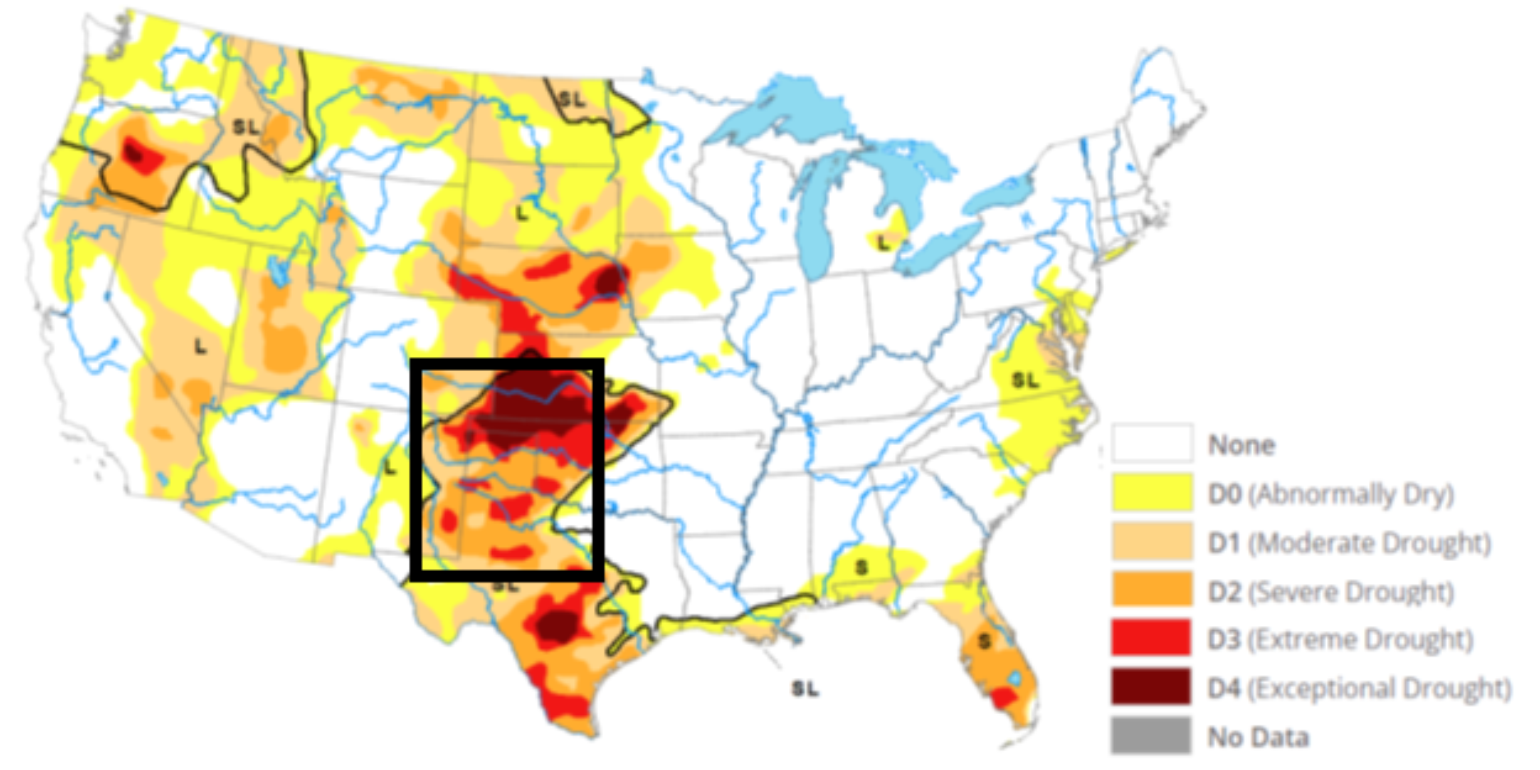
- Gulf of Mexico water temperatures appear to be running about 0.8 to 2.8 degrees C above normal, which means there is an enhancement to already warmer moist air that can travel northward into the Central Plains along strong southerly flow from developing low-pressure systems as they track from the front range of the Rockies into the central plains.
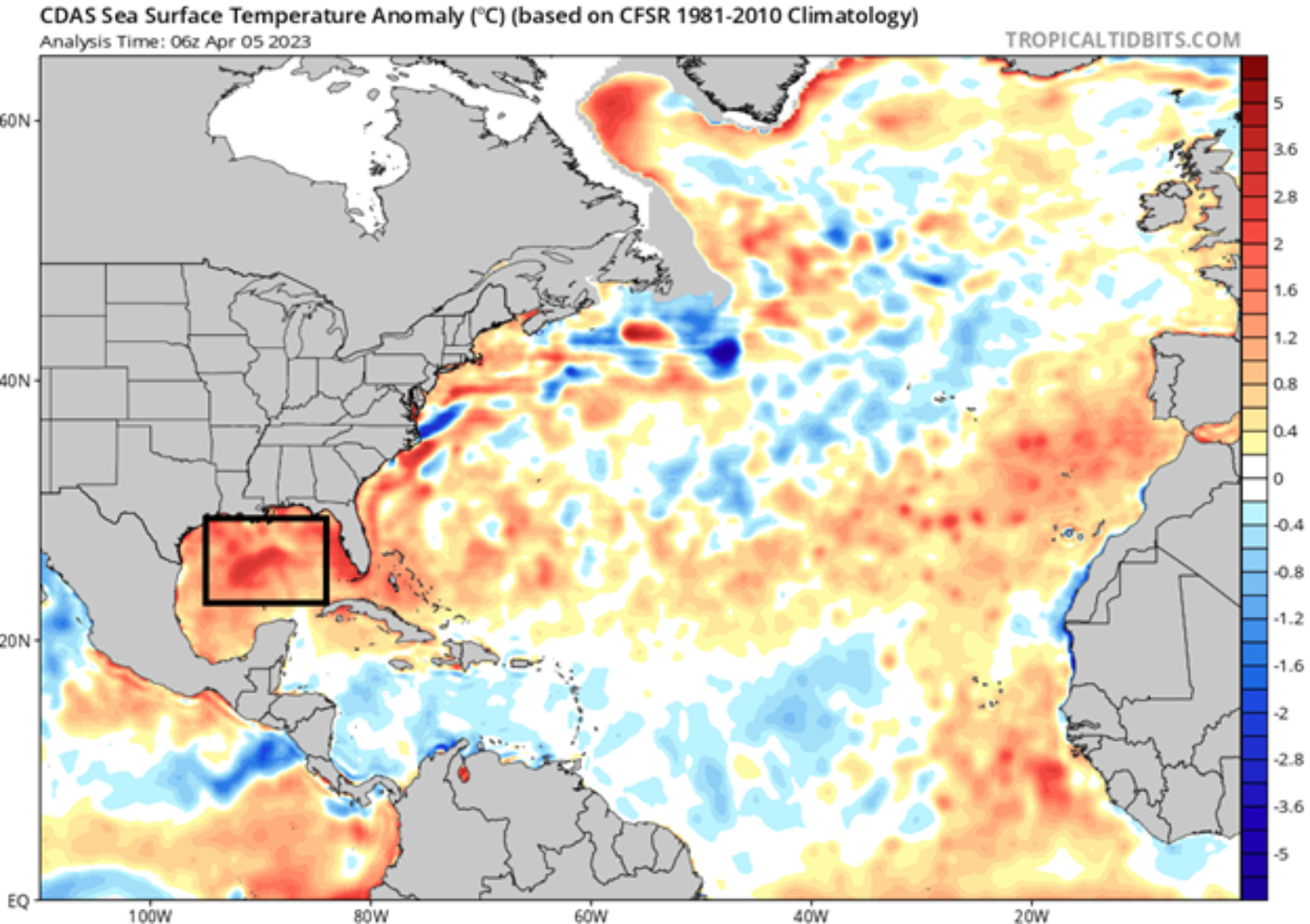
- Any upper Midwest, Canadian prairies, or Rocky Mountains resident knows it has been one heck of a snow year. This provides an enhancement of colder air as it gets pulled south behind developing surface low-pressure systems and clashes with that warm moist Gulf of Mexico air mass.
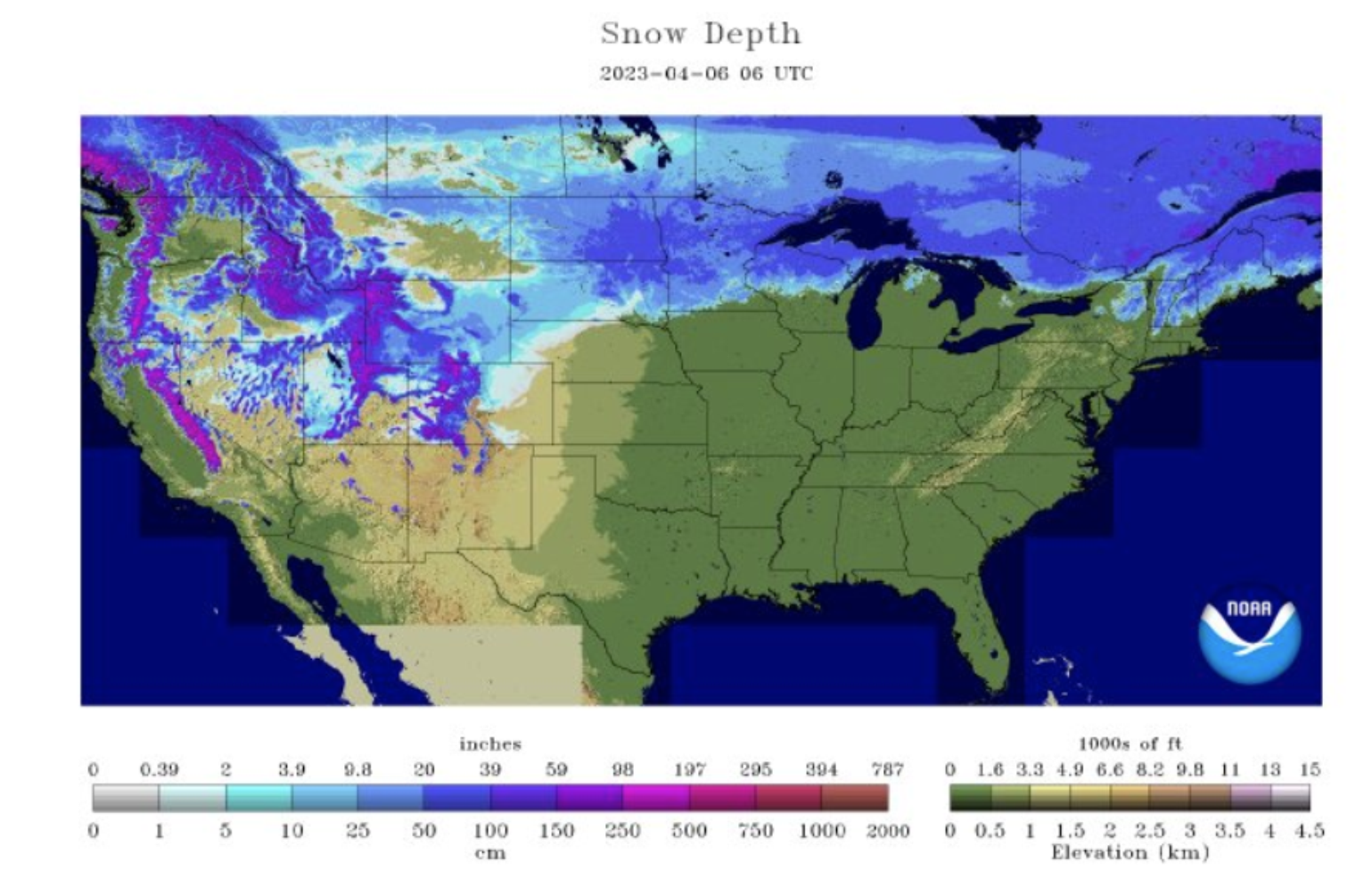
Overall, the climate forcers explained above match closely with other active severe weather years like the 2011 season, which was very busy in April and May and resulted in the 2011 Tuscaloosa and Joplin tornado events. Therefore, due to these climate forcers, the 2023 severe weather season has been enhanced and will likely continue into later April after a brief pattern change in the central U.S. with a temporary ridge of high pressure that will provide the first warm-up to the upper Midwest and put a lid on Central Plains severe weather for a week or so.
In summary, severe weather losses will be a function of where the severe weather occurs and the overall exposure it impacts. Hail remains the primary driver of annual U.S. thunderstorm losses. Still, media attention will always be drawn to the significant impactful tornadoes, which tend to drive the tail losses for most insurance portfolios. It is impossible to forecast how the spring severe weather season will unfold and where severe weather will strike in detail. Still, it does appear that the dice are loaded for a higher occurrence of severe weather this spring season.
